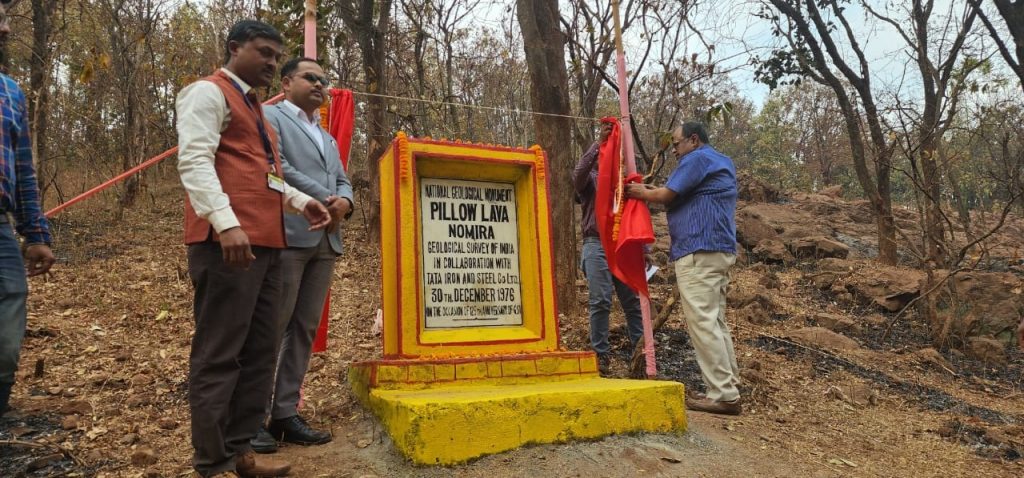Joda: The lesser-known pillow lava formation found in Nomira village under this block in Keonjhar district, which was declared a national geological monument by the Geological Survey of India (GSI) in December 1976, has been designated as a geo-heritage site. In a public meeting Friday at the site, GSI Deputy Director General Dr Saibal Chandra Mitra along with director KK Nayak, Keonjhar divisional forest officer (DFO) Dhanraj HD, and geologist Himanshu Patra made the announcement and cleared apprehensions among local residents.
According to reports, the rare formation came into existence 2.8 billion years ago, when the area was covered by oceans, and provides an important clue to the evolution of Precambrian peninsular India. The pillow lava outcrops look like small buns or pillows, a feature formed when hot molten basaltic magma slowly erupted under water and solidified rapidly. The well-preserved pillow structures are roughly ellipsoidal and closely packed. The site was discovered by British geologists Brian Jones and Thomas Dunne in 1942. It was the second place in India where such formations were found, the other being Maradihalli, a small village situated in Chitradurga district of Karnataka.
Keeping in view the research work by geologists and to develop the site as a tourist destination, the Ministry of Mines is working on a draft Geo-Heritage Sites and Geo-Relics (Preservation and Maintenance) Bill. The Bill will be implemented after it is passed by both Houses of Parliament, Mitra said. Once the Bill is implemented, an area of 100 meters from the spot will be out of bounds for the public and declared a prohibited zone. An area of 200 meters surrounding the site will be declared a ‘controlled’ zone, informed Nayak.
Local residents are hopeful that once the site is declared a tourist destination, footfalls in the locality will increase. DFO Dhanraj said it will usher in the economical development of the locality. Sarat Chandra Barik, a local residing near the site said, “The place had been declared a ‘research’ site when Nandini Satpathy was Odisha’s, Chief Minister.” Many geology students from Barbil College were present at the meeting. Lecturer Prafulla Panda described how the site was formed in ancient times and why it is called ‘pillow lava’.
Nomira is located about 18 km south of this town, on the BarbilLahunipada state highway. The monument can be approached from here by following the JodaNayagarh road up to Bamebari village and then trekking two kilometres eastward. Nestled in an unapproachable terrain that was dense jungle till a few decades ago, Nomira is one of the best-preserved pillow lava sites in the world because of its remote location.
